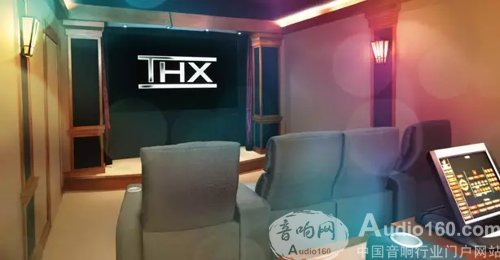A complete private theater is made up of audiovisual equipment and audio-visual room space, and the audio response characteristics of the room are as important as the frequency response of the equipment. As mentioned in the American Audio magazine, when introducing the THX home theater, it often uses a lot of space to describe how to transform the three-dimensional size of the room and the walls, floors, ceilings, doors and windows of the audio-visual room and how to correctly place the speakers when building a home theater. , screens, etc., and the list of audio-visual equipment, indicators, etc. are just a few chats. In fact, many of my friends have spent a lot of manpower, material resources and financial resources on the frequency response and distortion of audio-visual equipment, but they have neglected the three-dimensional size of the room, the interior decoration form and materials, and the home furnishings. The great impact has made the home theaters that cost huge amounts of money less effective than others. Hi-Fi enthusiasts usually say "master playing room, low-hand playing equipment" is the reason. The sound reproduction of audio equipment has a very close relationship with the acoustic characteristics of the building. In order for the sound system to perform at its highest level, the listening room must be acoustically treated. There are four aspects to consider for the architectural acoustic characteristics of the listening room, 1 reverberation time, 2 response attenuation diffusion characteristics, 3 room frequency response characteristics, and 4 ambient noise levels. The acoustic characteristics of the building in the listening room vary, and the reflection and absorption of sound by different objects are also different. Therefore, the acoustic processing to improve the listening environment and the improvement of acoustic defects are very complicated. Whenever possible, it is best to avoid the size of any two sides of the room being equal, or one side that is exactly twice the other side, that is, a room with a square or aspect ratio, because this ratio of room will produce standing waves, low frequency acoustic resonance. , causing sound staining. The sound formed by the repeated reflection of walls, ceilings, floors, furniture and the human body in the room continues to exist and gradually decays, called reverberation (also known as reverberation). It is different from echo, which is not a smooth decay but a sudden return of sound. For the most important indicator of room acoustics, the first is the reverberation time, which is the time required for the attenuation of sound energy to drop to one millionth (60dB) of the original intensity. For a certain room, the reverberation time mainly depends on In the sound absorption process. For the reverberation time of the Hi-Fi listening room, it can take 0.4~0.5 seconds. The reverberation time is moderate, the music is full, the voice is full, the reverberation time is longer and the sound is more lively and rich, but when it is too long, the sound is easy to be ambiguous, the speech intelligibility is degraded, the tone lacks strength and rhythm, and the reverberation time is too short. The sound is harder, lacks anger, and there is no reverberant sound (such as outdoor) often with a sense of dullness. The diffusion characteristics of the room are good, the sound attenuation is smooth, and the sound throughout the room feels even. Any convex surface has the ability to diffuse sound waves, including bevels, curved surfaces, and convex arc surfaces. When the diffuse acoustic wave frequency is required to be convex, the diffuser can be used for processing. When a certain frequency in the sound is excessively strengthened or weakened for some reason, the uniformity of the sound in the room will be destroyed. This phenomenon is called sound coloration. For example, standing waves can change the original characteristics of the sound. The large space listening room not only helps the low frequency extension, but also makes the sound feel easier and more lively. The room area generally used as a listening room in China is about 14m2, about 2.8m high, and the volume is about 40m3. In this kind of room, as long as the acoustics are handled properly, it should be able to have a good listening effect. Since the wavelength of sound below 100 Hz is greater than 3.4 m, which is the same order of magnitude as the size of the room, only a few resonant frequencies, low frequency sound waves can be generated in its space. Yuchai 0-20KW Diesel Generator Yuchai 0-20Kw Diesel Generator,Yuchai Soundproof Power Generator,Yuchai Canopy Power Generator,Yuchai Mobile Power Generator Shanghai Kosta Electric Co., Ltd. , https://www.generatorkosta.com
